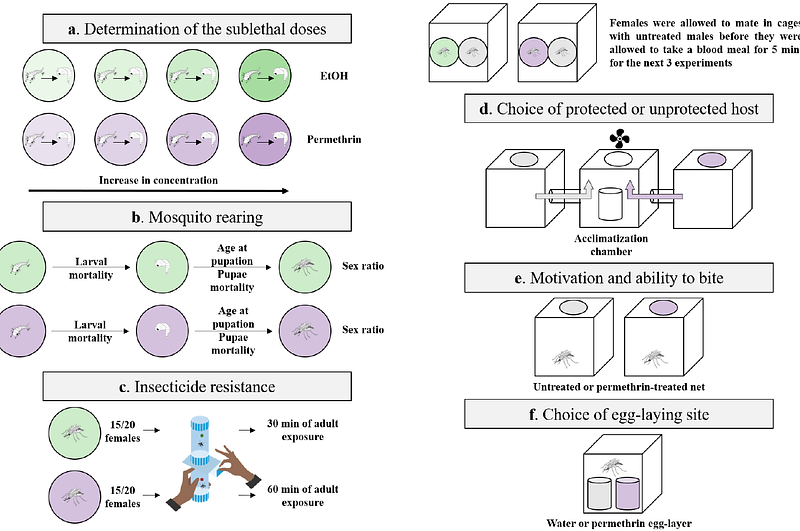Sublethal insecticide exposure of larvae affects the blood-feeding behaviour of adult mosquitoes

Sublethal insecticide exposure of larvae affects the blood-feeding behaviour of adult mosquitoes
Zeferino, T. G.; Acerbi, G.; Koella, J. C.
AbstractBecause of their widespread use for the control of disease vectors and agricultural pests, insecticides have become ubiquitous in the environment, including in water bodies harbouring mosquito larvae. These are therefore continuously exposed to sublethal doses. Since this has long-lasting effects on the mosquitoes physiology and life-history, we expected that it may also affect behaviours that underlie the mosquitoes population dynamics and disease epidemiology, such as egg-laying preference, blood-feeding motivation, and host-seeking behaviour. Using an insecticide-sensitive and a resistant strain of Anopheles gambiae, an important malaria vector, we evaluated the effects of sublethal exposure to permethrin throughout larval development on the resistance to the insecticide in adults, on host-seeking behaviour, on the motivation to blood-feed, and on egg-laying behaviour. Resistance, assessed by rates of knock-down and mortality, were similar between exposed and unexposed mosquitoes. However, exposure to sublethal doses of insecticide caused female mosquitoes to split their egg clutches into two parts and increased the motivation of mosquitoes to seek blood meals through permethrin-treated nets, regardless of their sensitivity to the insecticide. Furthermore, it enhanced the natural preference of resistant strains for permethrin-treated nets and increased their blood-meal size. Our results thus suggest that sublethal insecticide concentrations in larval breeding sites have important epidemiological implications.


